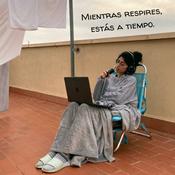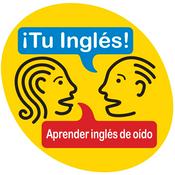Behind The Knife: The Surgery Podcast

594 episodios

Behind the Knife ABSITE 2026 - Trauma - Part 2
07/1/2026 | 54 min
Behind the Knife ABSITE 2026 – Up-to-date and high yield learning to help you DOMINATE the exam.Don’t forget to check out our ABSITE Podcast Companion Book available on Amazon: https://www.amazon.com/Behind-Knife-ABSITE-Podcast-Companion/dp/B0CLDQWZG3/ref=monarch_sidesheetBe sure to check out our free study aid, which includes all 32 review episodes, brief written summaries, high yield images, and flash cards. Simply create an account on our iOS or Android app or on our website and you will find the entire course in your Library. Apple App Store: https://apps.apple.com/us/app/behind-the-knife/id1672420049Google Play App Store: https://play.google.com/store/apps/details?id=com.btk.appBehind the Knife would like to sincerely thank Medtronic for sponsoring the entire 2026 ABSITE podcast series. Medtronic has a rich history of supporting surgical education, and we couldn’t be happier that they chose to partner with Behind the Knife. Learn more at https://www.medtronic.com/en-us/index.htmlIf you like the work that Behind the Knife is doing, please leave us a review wherever you listen to podcasts. Please visit https://behindtheknife.org to access other high-yield surgical education podcasts, videos and more. Check out our recent episodes here: https://behindtheknife.org/listenBehind the Knife Premium:General Surgery Oral Board Review Course: https://behindtheknife.org/premium/general-surgery-oral-board-reviewTrauma Surgery Video Atlas: https://behindtheknife.org/premium/trauma-surgery-video-atlasDominate Surgery: A High-Yield Guide to Your Surgery Clerkship: https://behindtheknife.org/premium/dominate-surgery-a-high-yield-guide-to-your-surgery-clerkshipDominate Surgery for APPs: A High-Yield Guide to Your Surgery Rotation: https://behindtheknife.org/premium/dominate-surgery-for-apps-a-high-yield-guide-to-your-surgery-rotationVascular Surgery Oral Board Review Course: https://behindtheknife.org/premium/vascular-surgery-oral-board-audio-reviewColorectal Surgery Oral Board Review Course: https://behindtheknife.org/premium/colorectal-surgery-oral-board-audio-reviewSurgical Oncology Oral Board Review Course: https://behindtheknife.org/premium/surgical-oncology-oral-board-audio-reviewCardiothoracic Oral Board Review Course: https://behindtheknife.org/premium/cardiothoracic-surgery-oral-board-audio-reviewBehind the Knife in Español - repaso para el examen de certificación en cirugía general: https://app.behindtheknife.org/premium/repaso-para-el-examen-de-certificaci-n-en-cirug-a-general

Behind the Knife ABSITE 2026 - Trauma - Part 1
06/1/2026 | 40 min
Behind the Knife ABSITE 2026 – Up-to-date and high yield learning to help you DOMINATE the exam. Don’t forget to check out our ABSITE Podcast Companion Book available on Amazon: https://www.amazon.com/Behind-Knife-ABSITE-Podcast-Companion/dp/B0CLDQWZG3/ref=monarch_sidesheet Be sure to check out our free study aid, which includes all 32 review episodes, brief written summaries, high yield images, and flash cards. Simply create an account on our iOS or Android app or on our website and you will find the entire course in your Library. Apple App Store: https://apps.apple.com/us/app/behind-the-knife/id1672420049 Google Play App Store: https://play.google.com/store/apps/details?id=com.btk.app Behind the Knife would like to sincerely thank Medtronic for sponsoring the entire 2026 ABSITE podcast series. Medtronic has a rich history of supporting surgical education, and we couldn’t be happier that they chose to partner with Behind the Knife. Learn more at https://www.medtronic.com/en-us/index.html If you like the work that Behind the Knife is doing, please leave us a review wherever you listen to podcasts. Please visit https://behindtheknife.org to access other high-yield surgical education podcasts, videos and more. Check out our recent episodes here: https://behindtheknife.org/listen Behind the Knife Premium: General Surgery Oral Board Review Course: https://behindtheknife.org/premium/general-surgery-oral-board-review Trauma Surgery Video Atlas: https://behindtheknife.org/premium/trauma-surgery-video-atlas Dominate Surgery: A High-Yield Guide to Your Surgery Clerkship: https://behindtheknife.org/premium/dominate-surgery-a-high-yield-guide-to-your-surgery-clerkship Dominate Surgery for APPs: A High-Yield Guide to Your Surgery Rotation: https://behindtheknife.org/premium/dominate-surgery-for-apps-a-high-yield-guide-to-your-surgery-rotation Vascular Surgery Oral Board Review Course: https://behindtheknife.org/premium/vascular-surgery-oral-board-audio-review Colorectal Surgery Oral Board Review Course: https://behindtheknife.org/premium/colorectal-surgery-oral-board-audio-review Surgical Oncology Oral Board Review Course: https://behindtheknife.org/premium/surgical-oncology-oral-board-audio-review Cardiothoracic Oral Board Review Course: https://behindtheknife.org/premium/cardiothoracic-surgery-oral-board-audio-review Behind the Knife in Español - repaso para el examen de certificación en cirugía general: https://app.behindtheknife.org/premium/repaso-para-el-examen-de-certificaci-n-en-cirug-a-general

Clinical Challenges in Surgical Education: Power & Leadership
05/1/2026 | 33 min
Ever feel powerless in the clinical environment? You’re not alone - and you may have more power than you think. In this Clinical Challenges in Surgical Education, hosts Drs. Maya Hunt and Mckenzie Rowe explore power and leadership within surgical learning environments. Joined by guests Drs. Paula Ferrada, Chair of Surgery at Inova Fairfax, and Frances Mei Hardin, co-founder of the Hippocratic Collective, the team discusses frameworks of conceptualizing power, how it can be found at any point in training, and tips on how to identify and better wield our own power in learning environments. Episode Hosts: Dr. Maya Hunt, Indiana University, [email protected] Dr. Mckenzie Rowe, Inova Fairfax, [email protected] CoSEF: @surgedfellows, cosef.org Guests: Dr. Paula Ferrada, Inova Fairfax, @pferrada1, [email protected] Dr. Frances Mei Hardin, Hippocratic Collective, @francesmeimd, [email protected] Learning Objectives: Identify different sources of power within individuals Define framework of ‘power-over’ vs. ‘power-to/power-with’ Recognize how leaders (including residents) may wield different types of power in both harmful and helpful ways Spark self-reflection upon how each of us wields our own power in our role References: Brown B. Brené Brown on Power and Leadership. https://brenebrown.com/resources/brene-brown-on-power-and-leadership/. Pansardi P, Bindi M. The new concepts of power? Power-over, power-to and power-with. Journal of Political Power. 2021;14(1):51-71. doi:10.1080/2158379x.2021.1877001 Bolman LG, Deal TE. Power, Conflict, and Coalition. In: Reframing Organizations: Artistry, Choice, and Leadership. 7th ed. Jossey-Bass; 2021:187-207. Ferrada P. Breaking the silence: Addressing toxic leadership to restore psychological safety in healthcare. Forbes. October 8, 2025. https://www.forbes.com/councils/forbesbusinesscouncil/2025/10/08/breaking-the-silence-addressing-toxic-leadership-to-restore-psychological-safety-in-healthcare/. Sponsor Disclaimer: Visit goremedical.com/btkpod to learn more about GORE® SYNECOR Biomaterial, including supporting references and disclaimers for the presented content. Refer to Instructions for Use at eifu.goremedical.com for a complete description of all applicable indications, warnings, precautions and contraindications for the markets where this product is available. Rx only Please visit https://behindtheknife.org to access other high-yield surgical education podcasts, videos and more. If you liked this episode, check out our recent episodes here: https://behindtheknife.org/listen Behind the Knife Premium: General Surgery Oral Board Review Course: https://behindtheknife.org/premium/general-surgery-oral-board-review Trauma Surgery Video Atlas: https://behindtheknife.org/premium/trauma-surgery-video-atlas Dominate Surgery: A High-Yield Guide to Your Surgery Clerkship: https://behindtheknife.org/premium/dominate-surgery-a-high-yield-guide-to-your-surgery-clerkship Dominate Surgery for APPs: A High-Yield Guide to Your Surgery Rotation: https://behindtheknife.org/premium/dominate-surgery-for-apps-a-high-yield-guide-to-your-surgery-rotation Vascular Surgery Oral Board Review Course: https://behindtheknife.org/premium/vascular-surgery-oral-board-audio-review Colorectal Surgery Oral Board Review Course: https://behindtheknife.org/premium/colorectal-surgery-oral-board-audio-review Surgical Oncology Oral Board Review Course: https://behindtheknife.org/premium/surgical-oncology-oral-board-audio-review Cardiothoracic Oral Board Review Course: https://behindtheknife.org/premium/cardiothoracic-surgery-oral-board-audio-review Download our App: Apple App Store: https://apps.apple.com/us/app/behind-the-knife/id1672420049 Android/Google Play: https://play.google.com/store/apps/details?id=com.btk.app&hl=en_US

Behind the Knife ABSITE 2026 - Hematology
04/1/2026 | 44 min
Behind the Knife ABSITE 2026 – Up-to-date and high yield learning to help you DOMINATE the exam. Don’t forget to check out our ABSITE Podcast Companion Book available on Amazon: https://www.amazon.com/Behind-Knife-ABSITE-Podcast-Companion/dp/B0CLDQWZG3/ref=monarch_sidesheet Be sure to check out our free study aid, which includes all 32 review episodes, brief written summaries, high yield images, and flash cards. Simply create an account on our iOS or Android app or on our website and you will find the entire course in your Library. Apple App Store: https://apps.apple.com/us/app/behind-the-knife/id1672420049 Google Play App Store: https://play.google.com/store/apps/details?id=com.btk.app Behind the Knife would like to sincerely thank Medtronic for sponsoring the entire 2026 ABSITE podcast series. Medtronic has a rich history of supporting surgical education, and we couldn’t be happier that they chose to partner with Behind the Knife. Learn more at https://www.medtronic.com/en-us/index.html If you like the work that Behind the Knife is doing, please leave us a review wherever you listen to podcasts. Please visit https://behindtheknife.org to access other high-yield surgical education podcasts, videos and more. Check out our recent episodes here: https://behindtheknife.org/listen Behind the Knife Premium: General Surgery Oral Board Review Course: https://behindtheknife.org/premium/general-surgery-oral-board-review Trauma Surgery Video Atlas: https://behindtheknife.org/premium/trauma-surgery-video-atlas Dominate Surgery: A High-Yield Guide to Your Surgery Clerkship: https://behindtheknife.org/premium/dominate-surgery-a-high-yield-guide-to-your-surgery-clerkship Dominate Surgery for APPs: A High-Yield Guide to Your Surgery Rotation: https://behindtheknife.org/premium/dominate-surgery-for-apps-a-high-yield-guide-to-your-surgery-rotation Vascular Surgery Oral Board Review Course: https://behindtheknife.org/premium/vascular-surgery-oral-board-audio-review Colorectal Surgery Oral Board Review Course: https://behindtheknife.org/premium/colorectal-surgery-oral-board-audio-review Surgical Oncology Oral Board Review Course: https://behindtheknife.org/premium/surgical-oncology-oral-board-audio-review Cardiothoracic Oral Board Review Course: https://behindtheknife.org/premium/cardiothoracic-surgery-oral-board-audio-review Behind the Knife in Español - repaso para el examen de certificación en cirugía general: https://app.behindtheknife.org/premium/repaso-para-el-examen-de-certificaci-n-en-cirug-a-general

Behind the Knife ABSITE 2026 - Breast
03/1/2026 | 1 h 9 min
Behind the Knife ABSITE 2026 – Up-to-date and high yield learning to help you DOMINATE the exam. Don’t forget to check out our ABSITE Podcast Companion Book available on Amazon: https://www.amazon.com/Behind-Knife-ABSITE-Podcast-Companion/dp/B0CLDQWZG3/ref=monarch_sidesheet Be sure to check out our free study aid, which includes all 32 review episodes, brief written summaries, high yield images, and flash cards. Simply create an account on our iOS or Android app or on our website and you will find the entire course in your Library. Apple App Store: https://apps.apple.com/us/app/behind-the-knife/id1672420049 Google Play App Store: https://play.google.com/store/apps/details?id=com.btk.app Behind the Knife would like to sincerely thank Medtronic for sponsoring the entire 2026 ABSITE podcast series. Medtronic has a rich history of supporting surgical education, and we couldn’t be happier that they chose to partner with Behind the Knife. Learn more at https://www.medtronic.com/en-us/index.html If you like the work that Behind the Knife is doing, please leave us a review wherever you listen to podcasts. Please visit https://behindtheknife.org to access other high-yield surgical education podcasts, videos and more. Check out our recent episodes here: https://behindtheknife.org/listen Behind the Knife Premium: General Surgery Oral Board Review Course: https://behindtheknife.org/premium/general-surgery-oral-board-review Trauma Surgery Video Atlas: https://behindtheknife.org/premium/trauma-surgery-video-atlas Dominate Surgery: A High-Yield Guide to Your Surgery Clerkship: https://behindtheknife.org/premium/dominate-surgery-a-high-yield-guide-to-your-surgery-clerkship Dominate Surgery for APPs: A High-Yield Guide to Your Surgery Rotation: https://behindtheknife.org/premium/dominate-surgery-for-apps-a-high-yield-guide-to-your-surgery-rotation Vascular Surgery Oral Board Review Course: https://behindtheknife.org/premium/vascular-surgery-oral-board-audio-review Colorectal Surgery Oral Board Review Course: https://behindtheknife.org/premium/colorectal-surgery-oral-board-audio-review Surgical Oncology Oral Board Review Course: https://behindtheknife.org/premium/surgical-oncology-oral-board-audio-review Cardiothoracic Oral Board Review Course: https://behindtheknife.org/premium/cardiothoracic-surgery-oral-board-audio-review Behind the Knife in Español - repaso para el examen de certificación en cirugía general: https://app.behindtheknife.org/premium/repaso-para-el-examen-de-certificaci-n-en-cirug-a-general
Más podcasts de Educación
Podcasts a la moda de Educación
Acerca de Behind The Knife: The Surgery Podcast
Escucha Behind The Knife: The Surgery Podcast, El Podcast de Marco Antonio Regil y muchos más podcasts de todo el mundo con la aplicación de radio.net

Descarga la app gratuita: radio.net
- Añadir radios y podcasts a favoritos
- Transmisión por Wi-Fi y Bluetooth
- Carplay & Android Auto compatible
- Muchas otras funciones de la app
Descarga la app gratuita: radio.net
- Añadir radios y podcasts a favoritos
- Transmisión por Wi-Fi y Bluetooth
- Carplay & Android Auto compatible
- Muchas otras funciones de la app


Behind The Knife: The Surgery Podcast
Descarga la app,
Escucha.






































